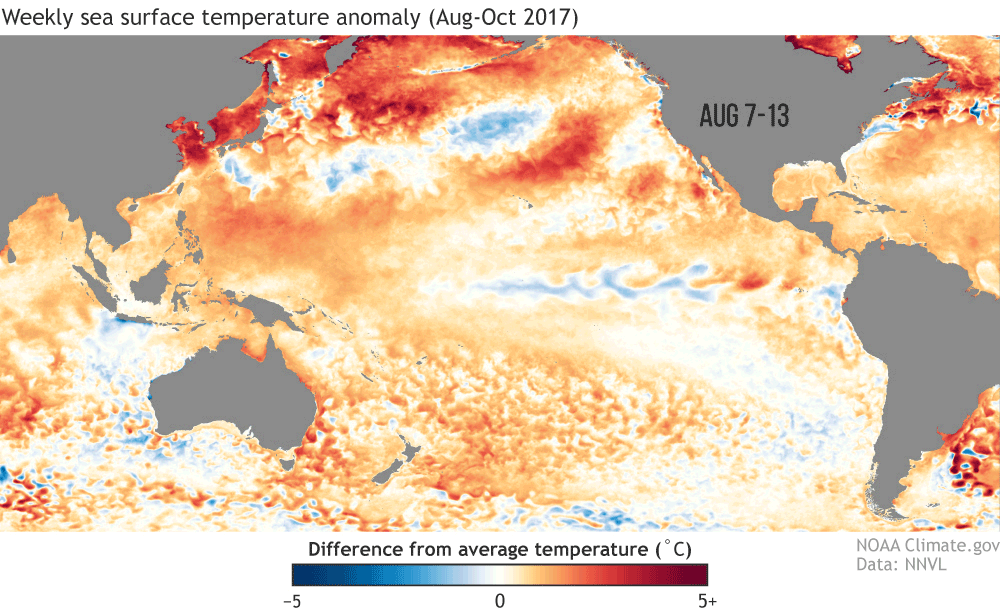Funny enough, during the largest period of bleaching (2014-2017) the predominant ENSO pattern was
El Nino which persisted from 2014 through 2016. Now, since you didn't know what La Nina was until today, let me point out that El Nino patterns are what you used to think La Nina patterns were, resulting in warm Eastern Pacific waters off the coast of North and South America, and colder water in the Western Pacific, including the GBR.
Now, 2017 was actually a La Nina year, so you might think that that year was marked by high temps in the region of the GBR, but oddly, that year resulted pretty mixed climate in the GBR region, where at times the warming was closer to what we see this year, while at other points the was marked cooling:
Also, it's absolutely hillarious seeing a global climate catastrophist saying this:
"Not sure what heat percentage over the historical mean tells you anyway"
...

You love shooting holes in your own arguments.







